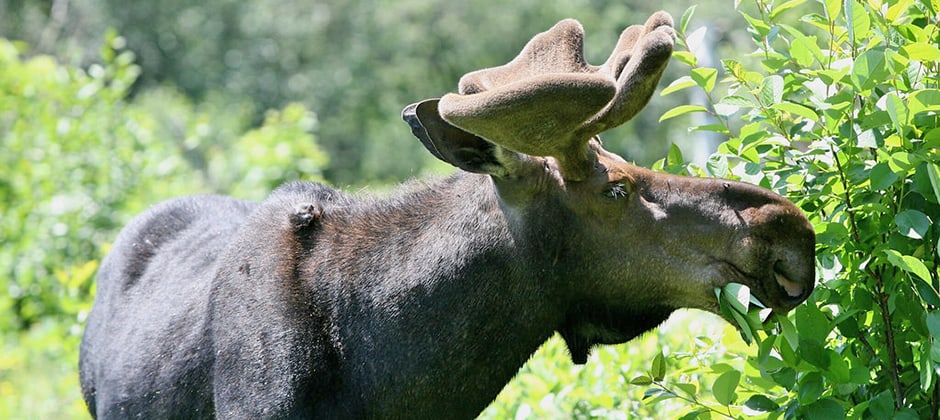Share this article
Moose choose least available food sources
By peeking at poop, researchers at Isle Royale National Park wanted to get a sense not only at what moose on the island were eating but how it may affect the ecosystem.
“Moose basically spending most of their lives eating,” said Sarah Hoy, an assistant professor at Michigan Technological University and lead author on a study on moose droppings published in the Journal of Animal Ecology. Needing to consume about 40 pounds of vegetation a day to survive, they eat until their fill up their stomach, rest to digest for an hour or so, then get up and start feeding again, she said. So what moose eat can have major impacts on the environment of Isle Royale.
“It could be that the moose is just eating whatever it comes across, or that they are fussy eaters and seek out some plants, whilst avoiding others,” Hoy said.
In the study, she and her colleagues analyzed moose (Alces alces) droppings under a polarized light microscope. They wanted to see if moose were eating food that was rare to the area they were in or if they were eating common food, at the risk of missing out on a balanced diet.
During the winter in Isle Royale, only a couple of plant species, such as balsam fir and cedar, have green vegetation, Hoy said. Moose sometimes eat twigs of deciduous plants in the winter, but since they don’t have leaves, they’re less nutritious and more difficult to digest, she said.
The team found that the Isle Royale moose are picky about what they ate, except when there are wolves present or if there’s deep snow. “They tend to go for the rarest thing in the area, which may mean that moose have to spend more time searching for food that was high quality rather than eating whatever they saw,” Hoy said. Being a fussy eater also means that moose maintain a more diverse and balanced diet. “The results of this study suggests that it’s more important for moose to maintain a more diverse diet, rather than just eating the most common plant, even if it takes more time to find food,” she said.
In other words, if balsam fir was rare in their home range, they preferred to eat that. But if it was more common, they showed less preference, oftentimes passing it up for something else.
Over time though, moose seemed to be pretty good at keeping their diets diverse, Hoy said. However, moose became less fussy eaters when there was a higher risk of being killed by wolves, as well as when there was deep snow that probably made it more difficult for them to travel and find food.
Using this information on moose food consuming habitats, Hoy and her colleagues built a model to understand more how the Isle Royale system operates. Knowing that moose only go after rarer food sources, they wanted to find out how this effects the ecosystem as a whole.
“Something just so small as whether a moose chooses to eat rare plants, or common plants appears to have this big effect on the stability of the system,” Hoy said. “If moose didn’t change how fussy they were in response to changes in the environment they could possibly drive one species to extinction, or make the ecosystem more unstable.”
Hoy said this information can be used to help biologists and managers understand what they might expect to happen in the forest later down the road. For example, if moose change their diet in response to a harsher winter, their model can help biologists understand how and why the whole ecosystem may be affected.
Header Image: By analyzing moose droppings, researchers found moose are selective about what they eat. ©Ray Dumas








